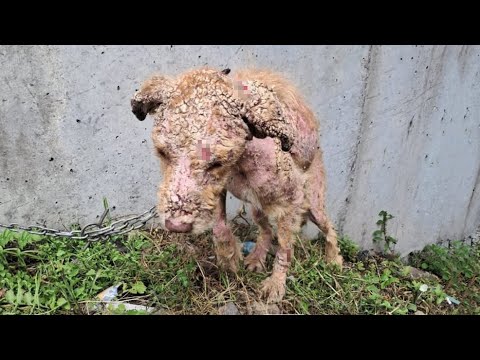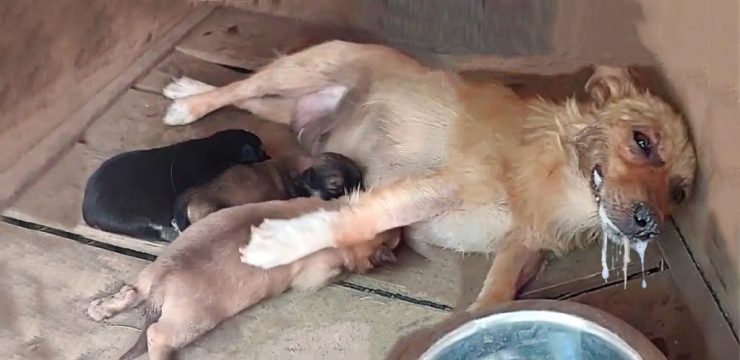She walked through the hospital doors with a heart full of hope, her hands resting gently on the curve of her belly. After months of anticipation, she believed she was finally about to welcome her three babies into the world. Every moment of discomfort, every flutter she thought was a kick, had been part of the joyful countdown to motherhood. But beyond those sterile white walls, fate had written a different story—one that would forever redefine what it means to survive.
For months, she had carried what she believed were triplets, preparing herself mentally and emotionally for the sleepless nights, the diapers, and the laughter of three tiny new lives. Family members had celebrated her growing belly, neighbors had offered advice, and her home was filled with baby supplies and love. She was ready. But when she was wheeled into the operating room, her dreams of holding her babies were about to collide with a reality far more frightening than anyone could have imagined.

As the cesarean procedure began, the medical team worked carefully, their encouraging words filling the air. Then, suddenly, the mood shifted. The smiles faded. Confusion rippled through the room, quickly replaced by alarm. The doctors stopped speaking for a moment, exchanging glances that spoke louder than words. What they saw inside her womb was not the movement of tiny limbs or the sound of newborn cries—but something far more sinister.
Dr. Erick Hanson Viana, a surgeon at Mexico City General Hospital, would later call it one of the most extraordinary—and shocking—moments of his entire career. Instead of delivering triplets, the team discovered and removed a massive tumor, a growth weighing nearly 33 kilograms—roughly the size of a small child. The mass had expanded within her abdomen, stretching and pressing against her organs, taking up nearly every bit of space inside her body.
The medical team worked swiftly, aware that every second mattered. As the tumor was carefully lifted from her body, relief mixed with disbelief. The operating room fell into a stunned silence. How could something so large have gone unnoticed for so long? How could a woman’s body endure such immense strain and still keep her alive? The answers were heartbreaking.
For the patient, the truth was devastating. She had entered the hospital expecting life—expecting to hear the first cries of her children. Instead, she woke up to learn that what she had carried was not new life at all, but a dangerous growth that had nearly ended her own. Her dream of motherhood was replaced by the sobering reality of survival. Yet, her story was not just one of loss—it became a medical miracle.
Doctors later confirmed that the tumor measured almost a meter across, with a circumference of 157 centimeters. Medical records suggest that it could be one of the largest tumors ever successfully removed from a living person. That she survived the operation was nothing short of miraculous—a combination of medical precision, teamwork, and the remarkable resilience of the human body.
But behind the miracle lay a painful truth: this situation might have been prevented. The tumor had grown slowly, over years, without proper medical attention. The woman had not received consistent prenatal care—no ultrasounds, no regular checkups, no lab tests. Early symptoms were mistaken for normal signs of pregnancy. Her expanding abdomen, fatigue, and discomfort were all attributed to carrying multiple babies. By the time she finally sought medical help, her body was already overwhelmed. Her heart struggled to keep up, her blood pressure soared, and her breathing grew labored as the growth consumed her from within.
Her story reveals more than a shocking medical event—it serves as a wake-up call about the importance of preventive healthcare. Many illnesses begin quietly, hiding behind symptoms that seem harmless or familiar. A swollen stomach might look like pregnancy. Constant tiredness can be brushed off as stress. Occasional pain can be ignored until it becomes unbearable. The body speaks softly at first, sending signals in the form of discomfort and fatigue, long before it cries out in distress. When we fail to listen, we risk everything.
This case underscores a critical truth: modern medicine is powerful, but prevention remains its strongest ally. No amount of advanced technology or surgical expertise can fully replace early detection and personal vigilance. Routine medical checkups, open communication with healthcare providers, and attention to our bodies’ warning signs can make the difference between life and death.
The woman’s survival was not only the result of her doctors’ skill—it was also a matter of timing. Had she waited even a few more weeks before seeking help, the pressure from the tumor might have caused irreversible organ damage or cardiac failure. Her story reminds us that health cannot be postponed or taken for granted.
In the days following her surgery, the woman’s recovery became a symbol of resilience throughout the hospital. Nurses spoke of her quiet strength, her gratitude for the second chance she’d been given. Though she had lost the dream of becoming a mother at that moment, she gained a deeper understanding of what it means to value life itself.
Her journey, however, also highlights an issue faced by millions: lack of access to proper medical care. In many parts of the world, economic hardship, misinformation, and limited resources prevent people from getting routine health screenings. The consequences can be dire. Her case serves as a stark reminder that healthcare should not be a luxury—it is a necessity, a human right, and the key to preventing tragedies like hers.
The woman’s story from Mexico City is far more than a medical headline—it’s a lesson in awareness, compassion, and survival. What was supposed to be the happiest day of her life nearly became her last. Instead of welcoming three babies, she faced a terrifying diagnosis and a life-threatening surgery. Yet she lived to tell her story, reminding us all that even in the darkest moments, hope and courage can prevail.
Her experience encourages us to listen—to pay attention to our bodies, to make time for checkups, to take small symptoms seriously. Health is fragile but precious, and every decision we make to protect it matters. We may not all face challenges as extraordinary as hers, but her ordeal teaches a universal truth: prevention is not just about avoiding illness—it’s about choosing life.
In the end, this woman’s story stands as a powerful testament to human endurance and the miracles of modern medicine. It urges us to act, to care, and to never overlook the quiet signals our bodies send. Because sometimes, survival begins not with a dramatic rescue, but with a simple choice—to listen, to act, and to take care of ourselves before it’s too late.





